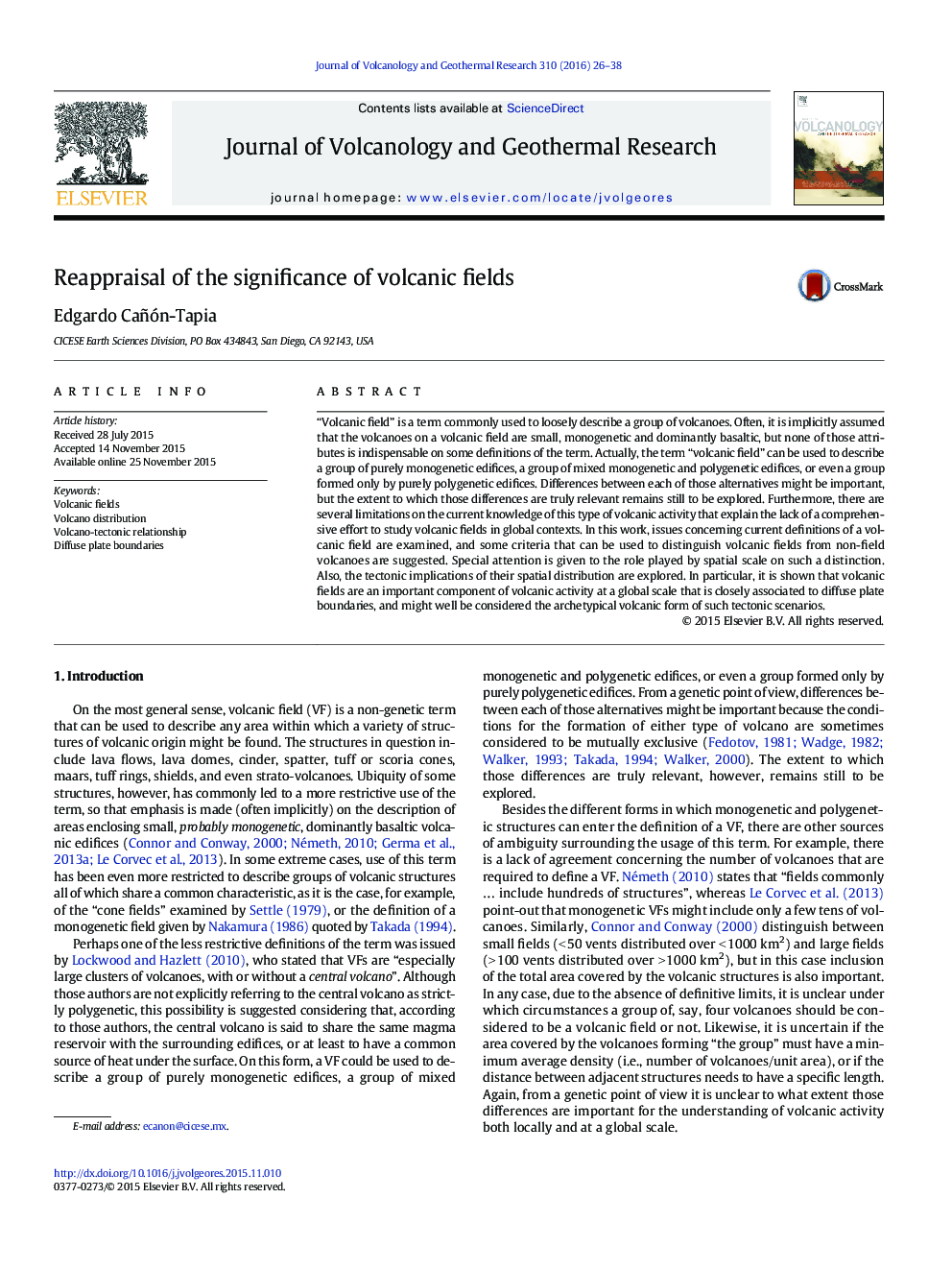| Article ID | Journal | Published Year | Pages | File Type |
|---|---|---|---|---|
| 6439968 | Journal of Volcanology and Geothermal Research | 2016 | 13 Pages |
Abstract
“Volcanic field” is a term commonly used to loosely describe a group of volcanoes. Often, it is implicitly assumed that the volcanoes on a volcanic field are small, monogenetic and dominantly basaltic, but none of those attributes is indispensable on some definitions of the term. Actually, the term “volcanic field” can be used to describe a group of purely monogenetic edifices, a group of mixed monogenetic and polygenetic edifices, or even a group formed only by purely polygenetic edifices. Differences between each of those alternatives might be important, but the extent to which those differences are truly relevant remains still to be explored. Furthermore, there are several limitations on the current knowledge of this type of volcanic activity that explain the lack of a comprehensive effort to study volcanic fields in global contexts. In this work, issues concerning current definitions of a volcanic field are examined, and some criteria that can be used to distinguish volcanic fields from non-field volcanoes are suggested. Special attention is given to the role played by spatial scale on such a distinction. Also, the tectonic implications of their spatial distribution are explored. In particular, it is shown that volcanic fields are an important component of volcanic activity at a global scale that is closely associated to diffuse plate boundaries, and might well be considered the archetypical volcanic form of such tectonic scenarios.
Keywords
Related Topics
Physical Sciences and Engineering
Earth and Planetary Sciences
Geochemistry and Petrology
Authors
Edgardo Cañón-Tapia,
